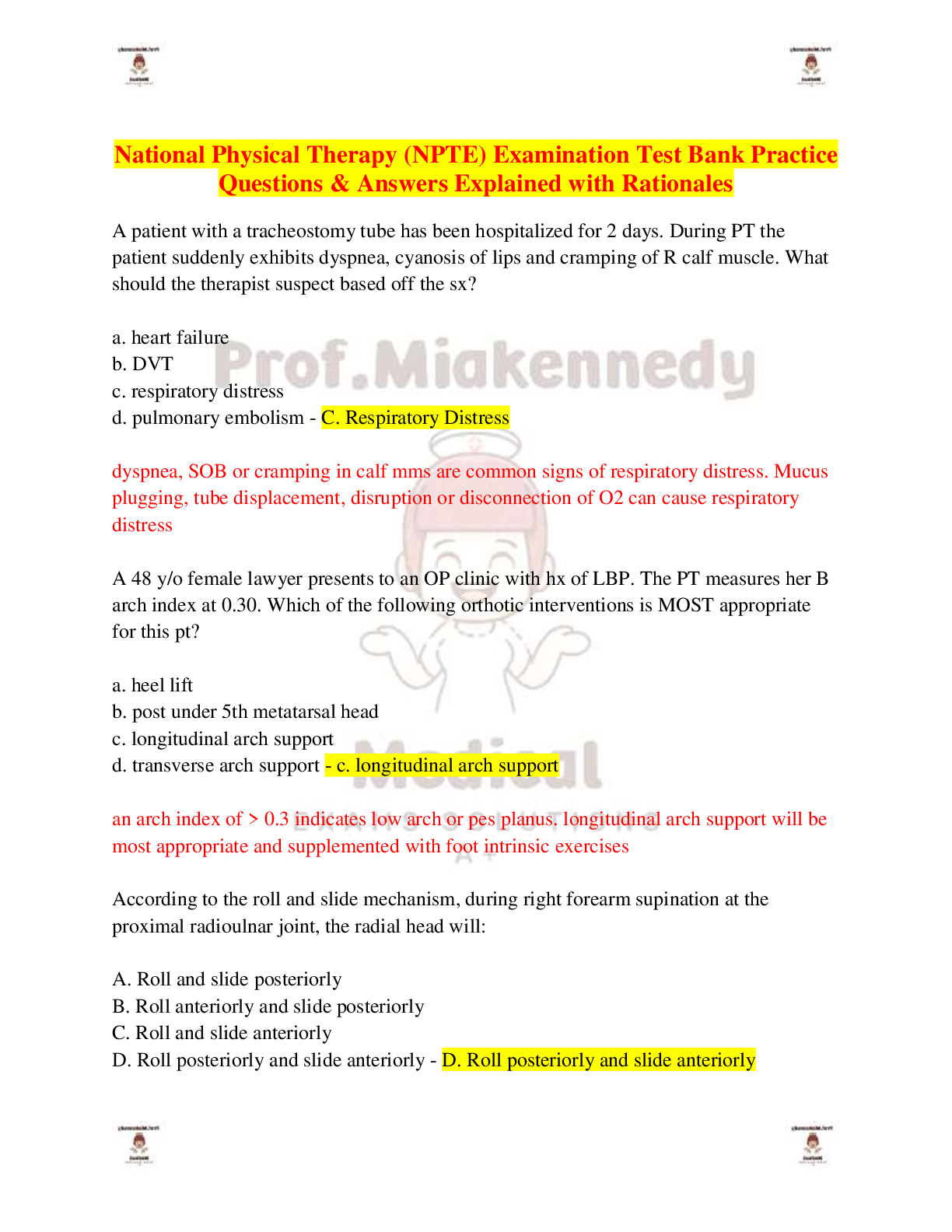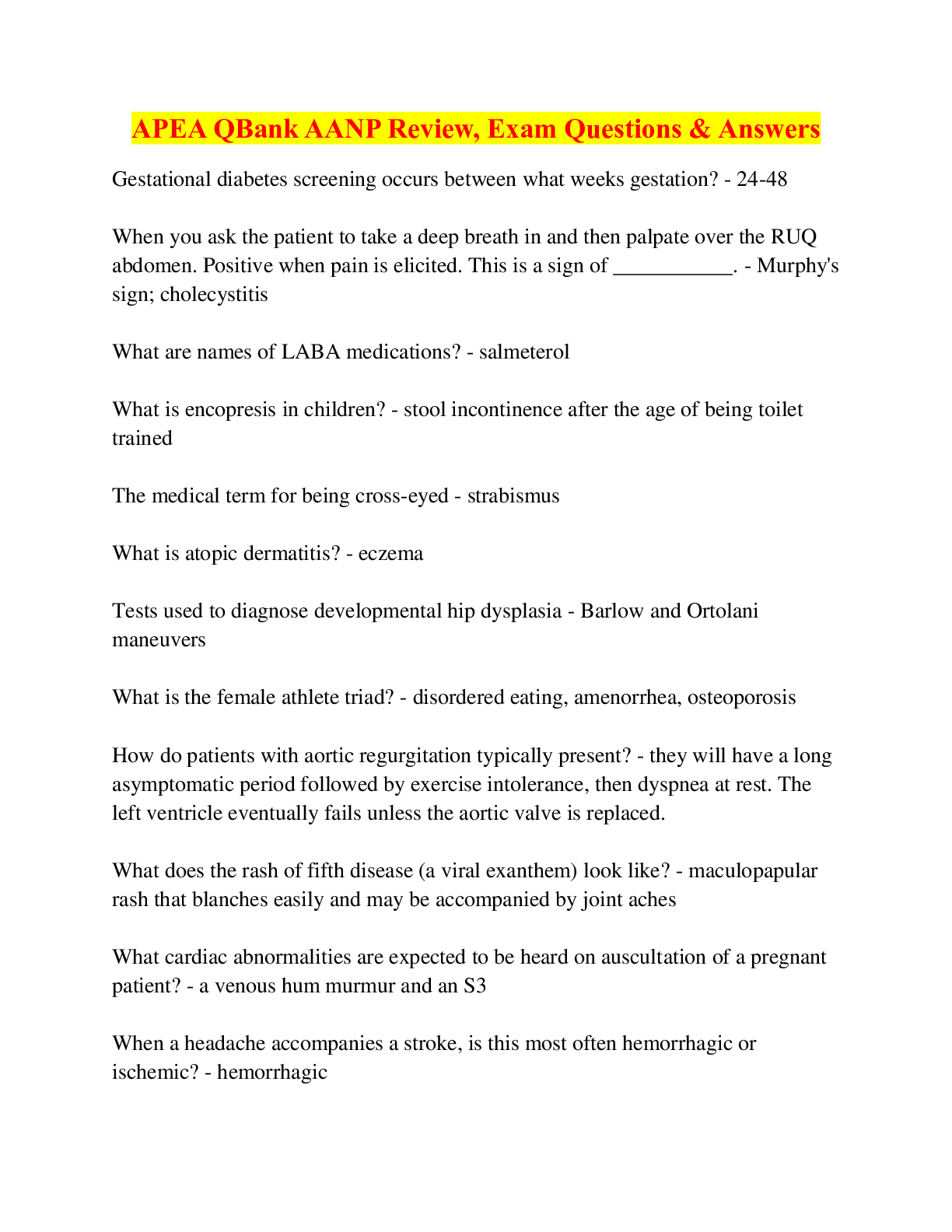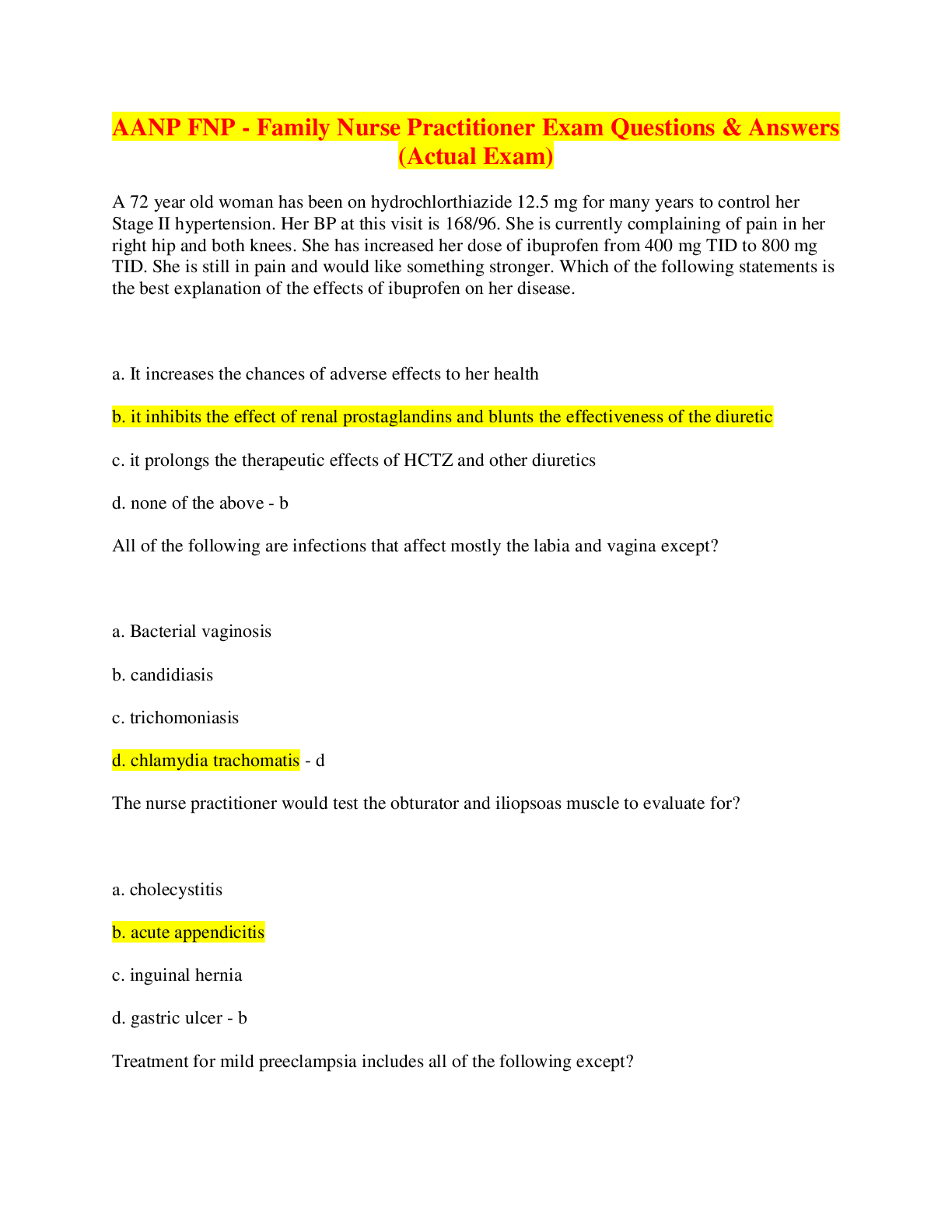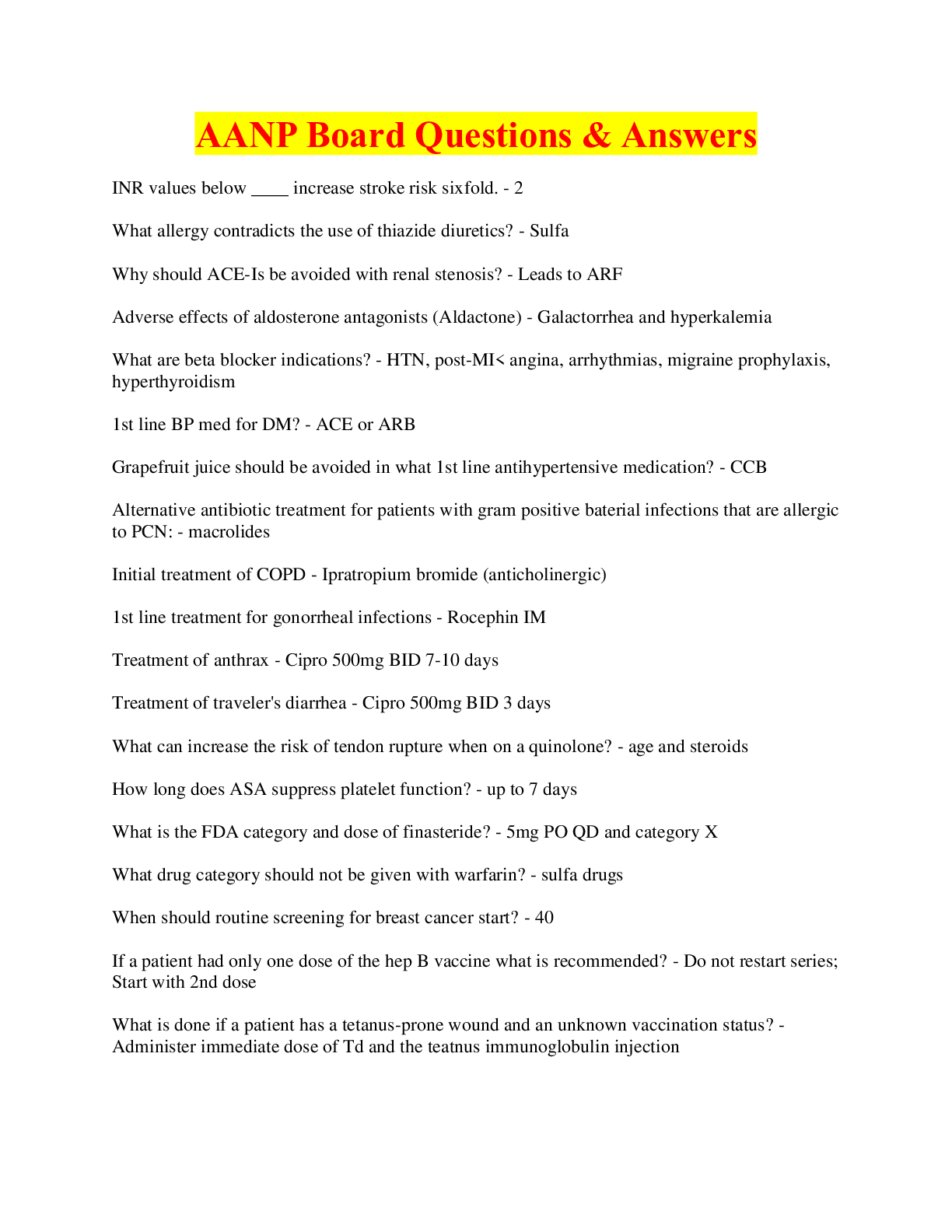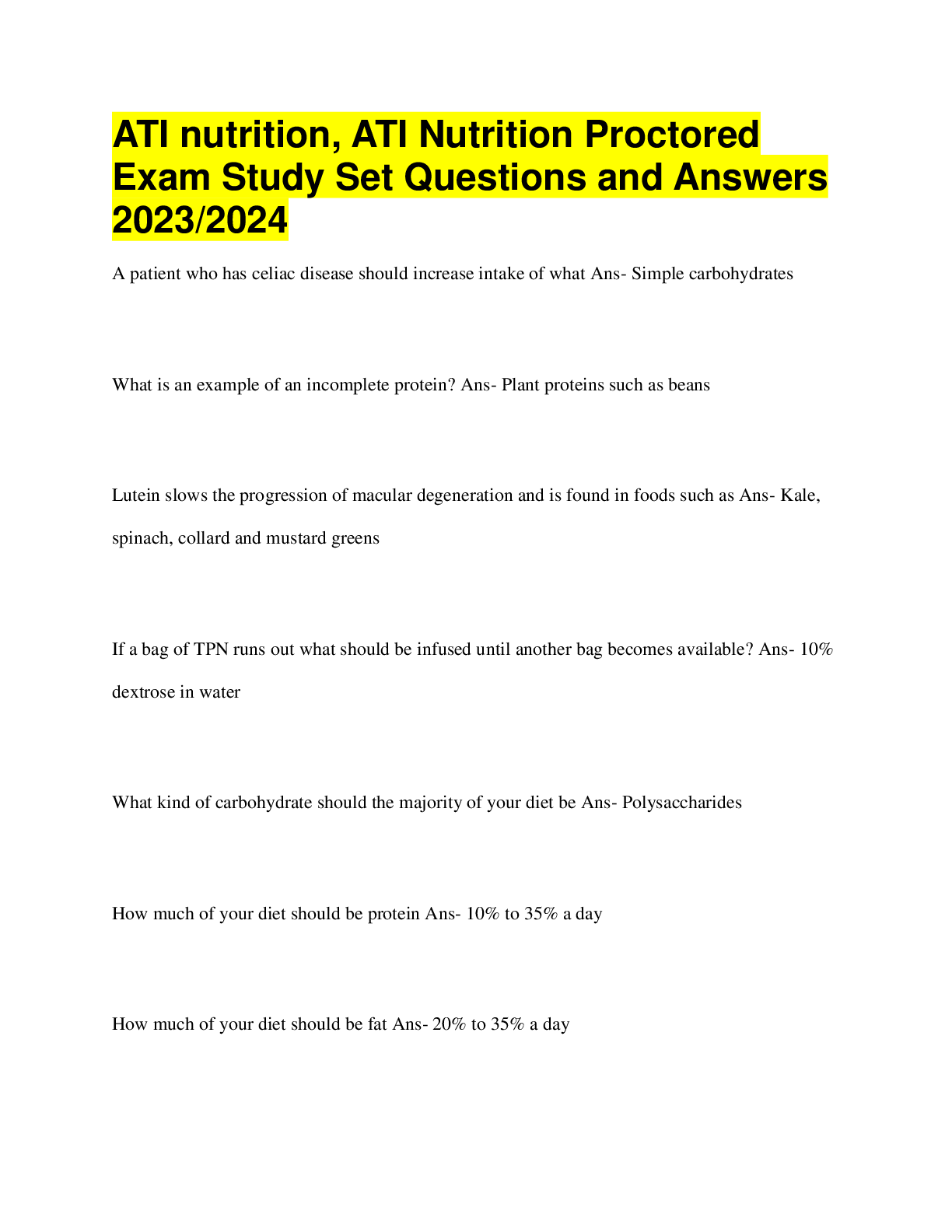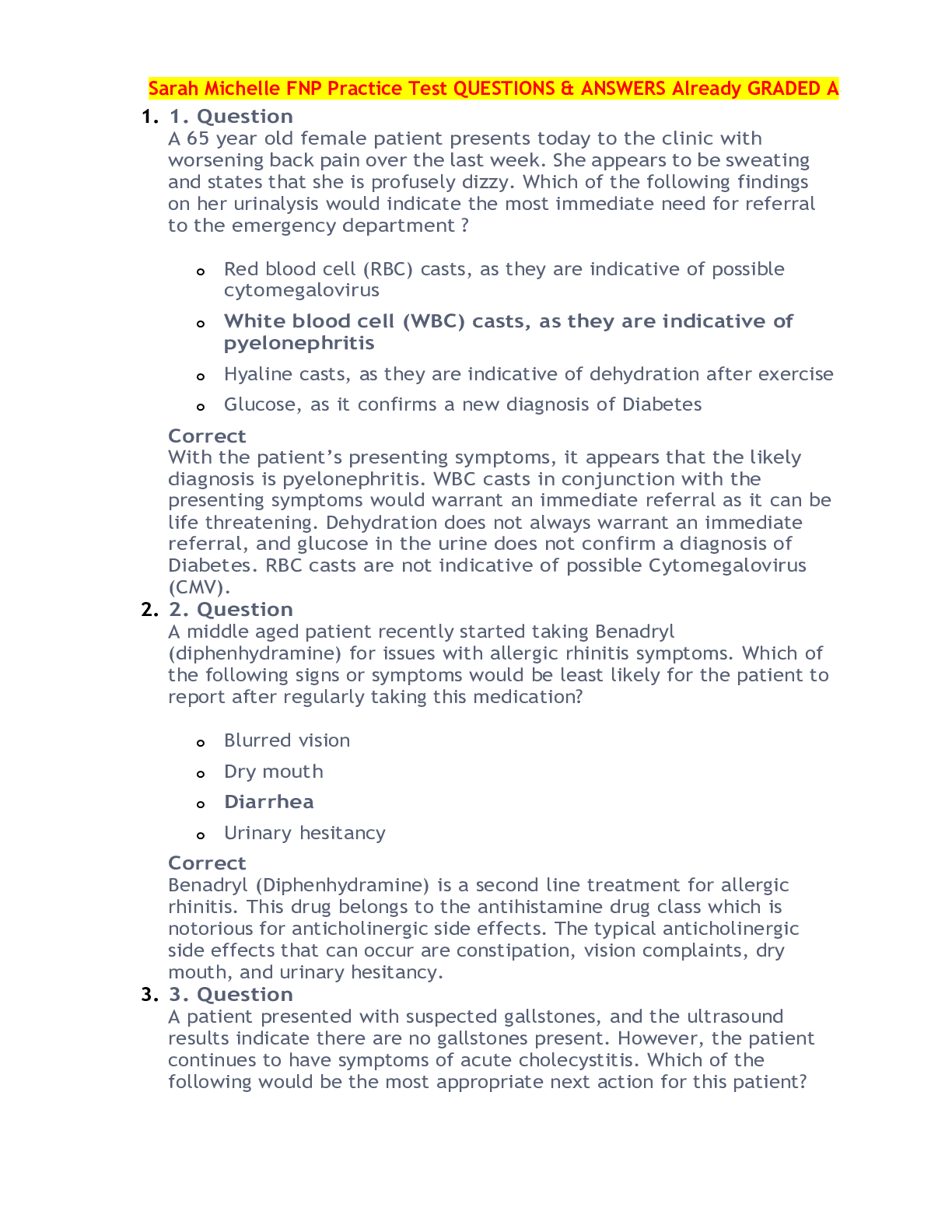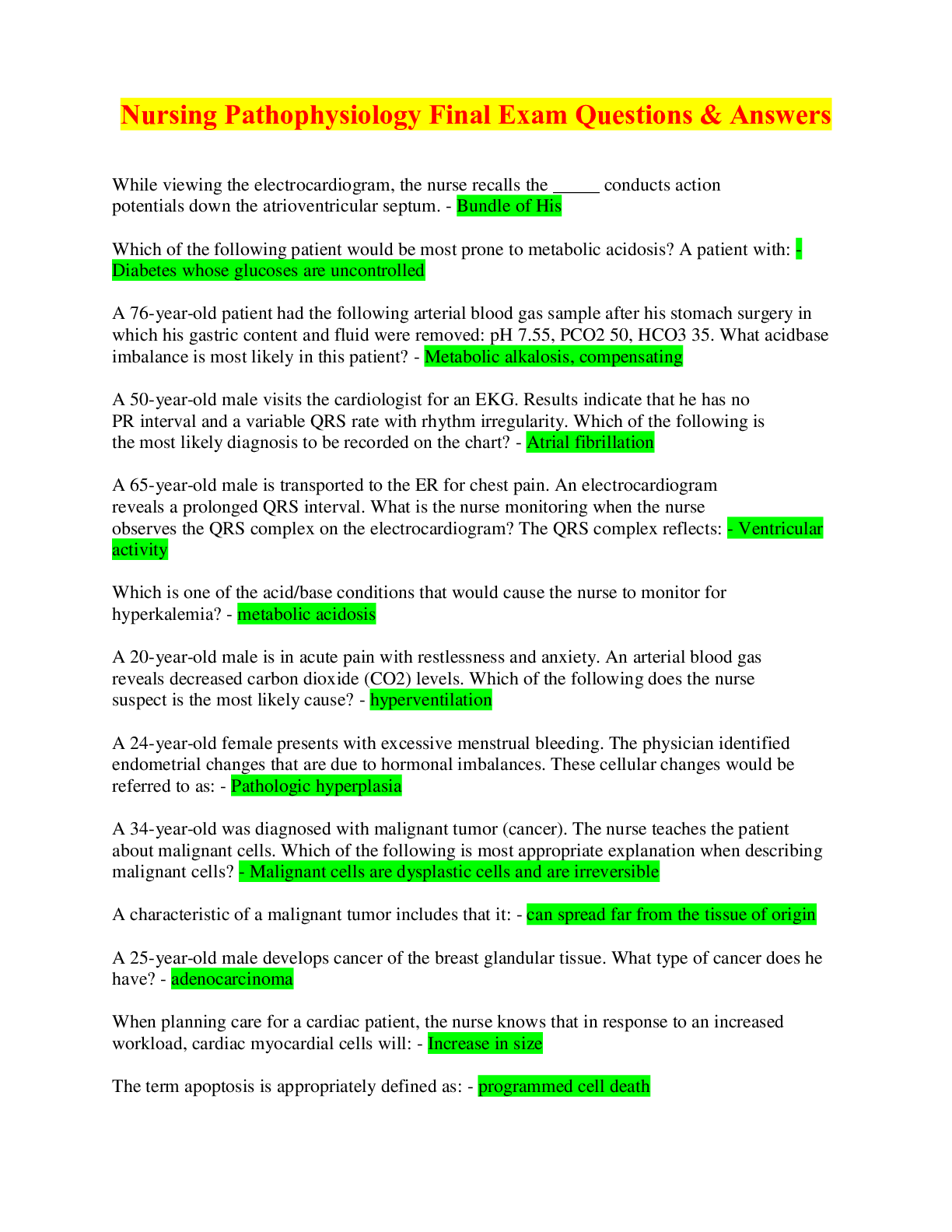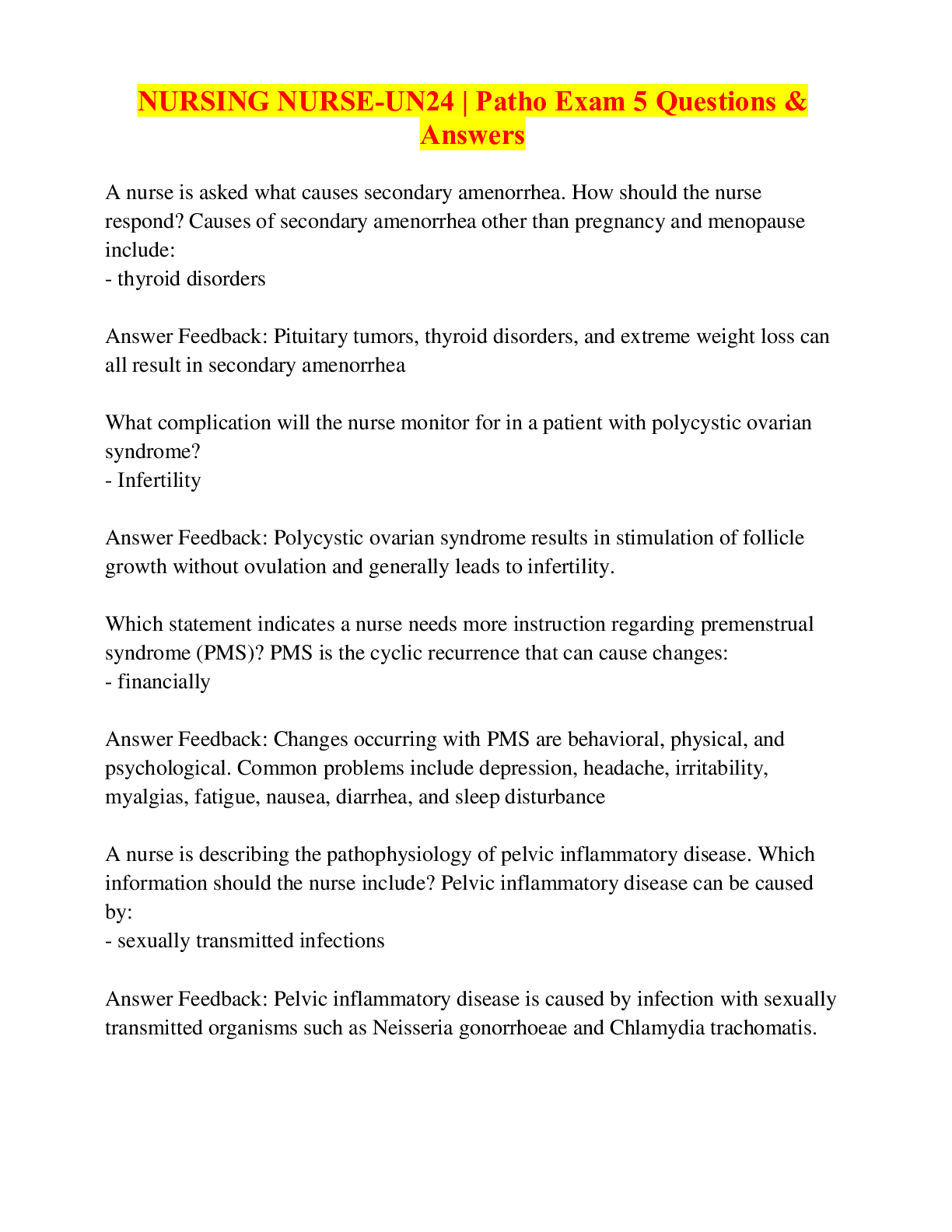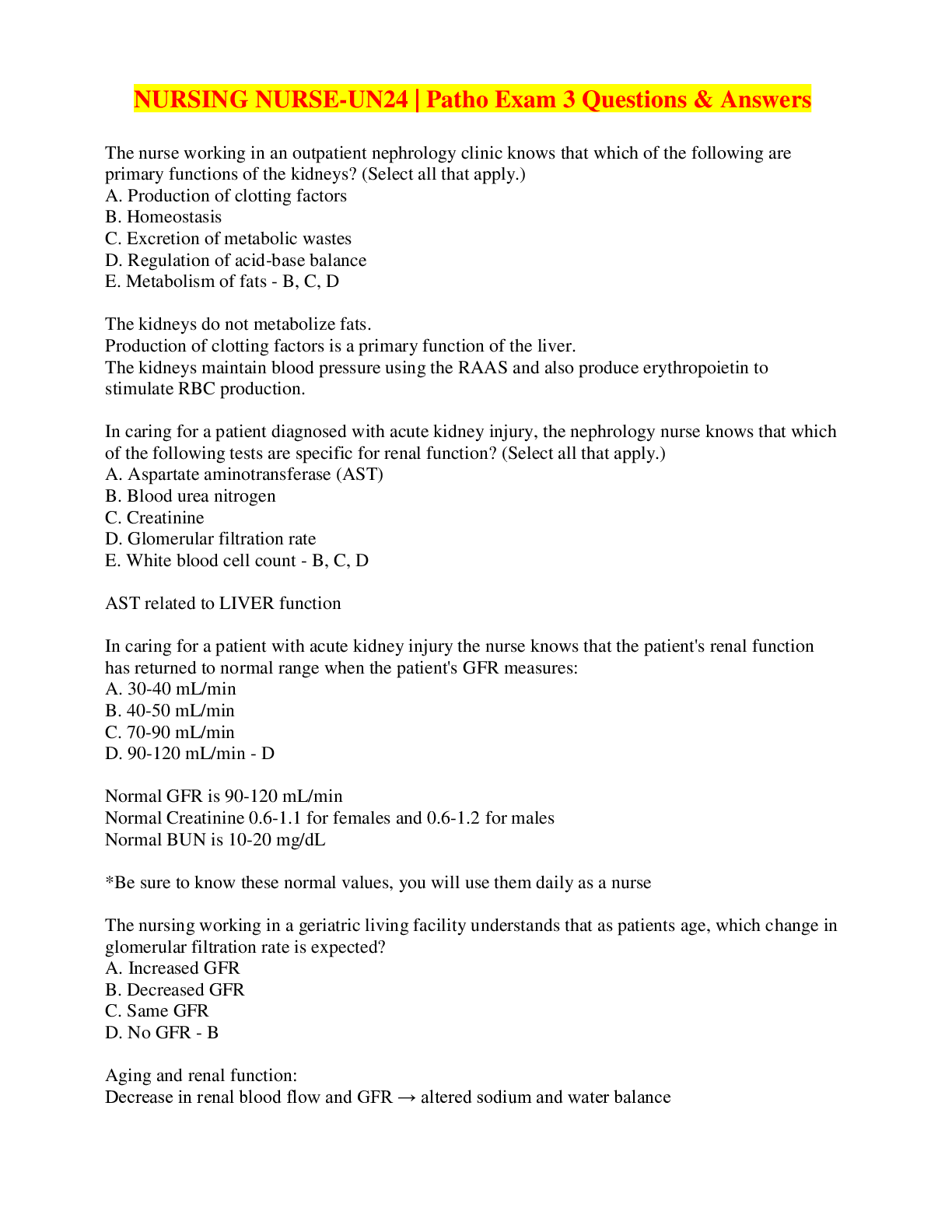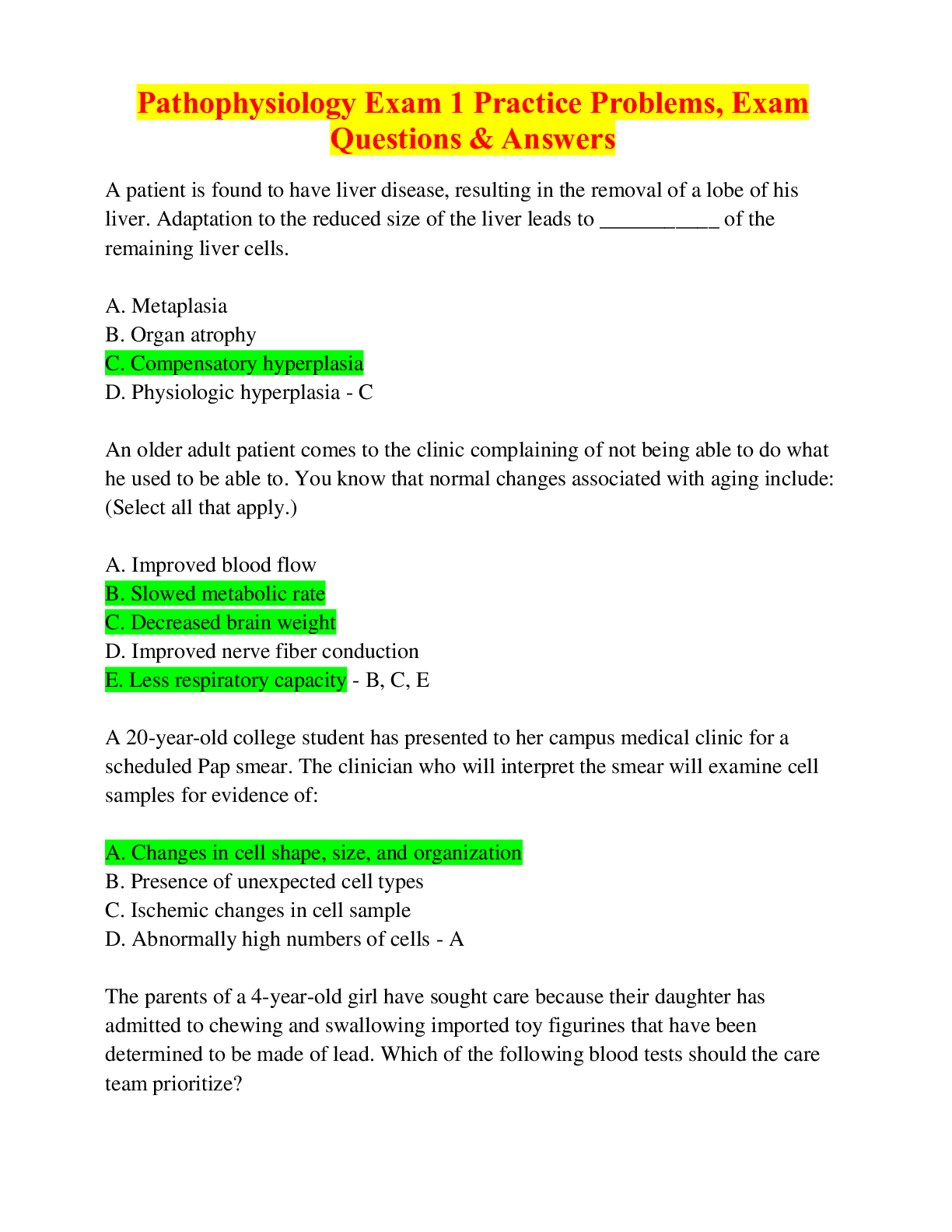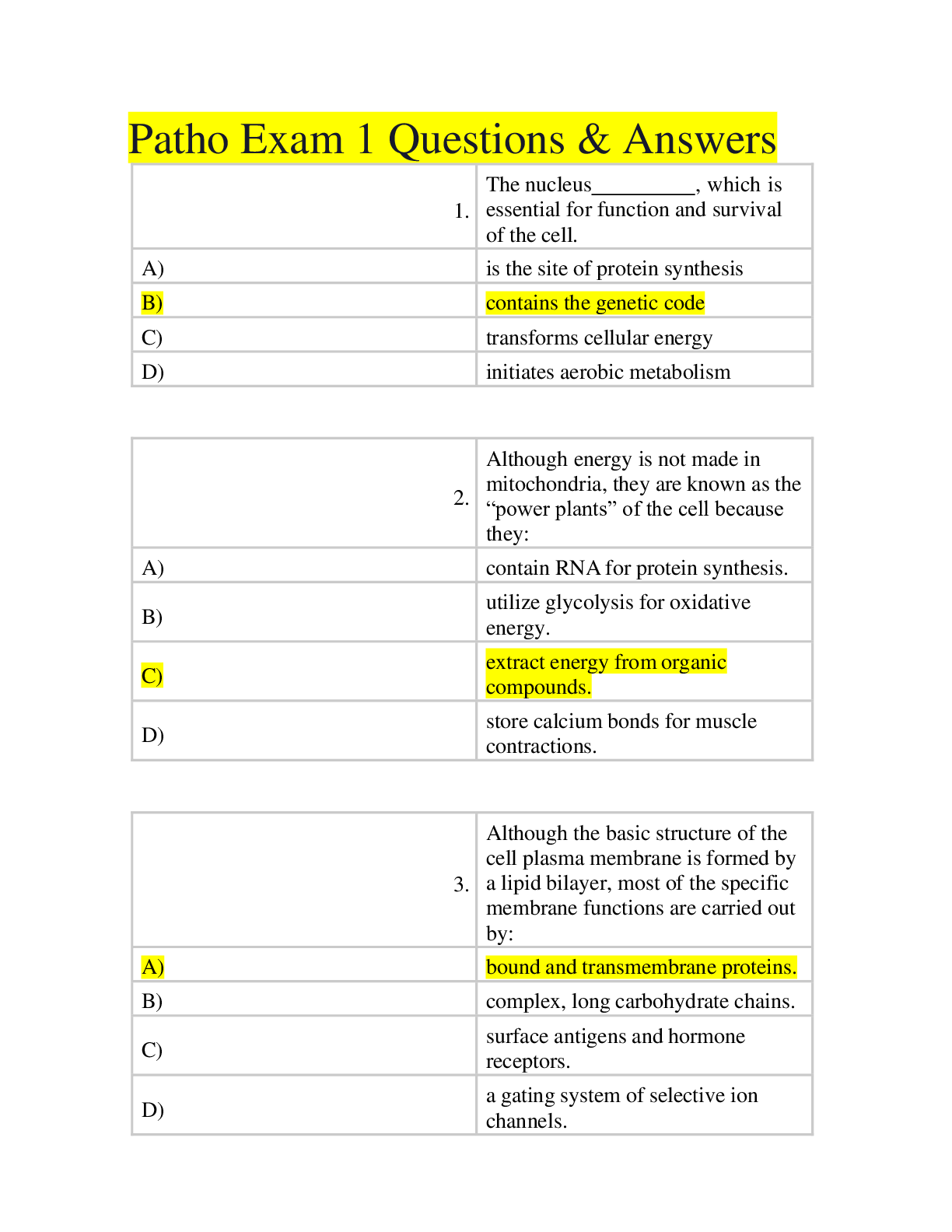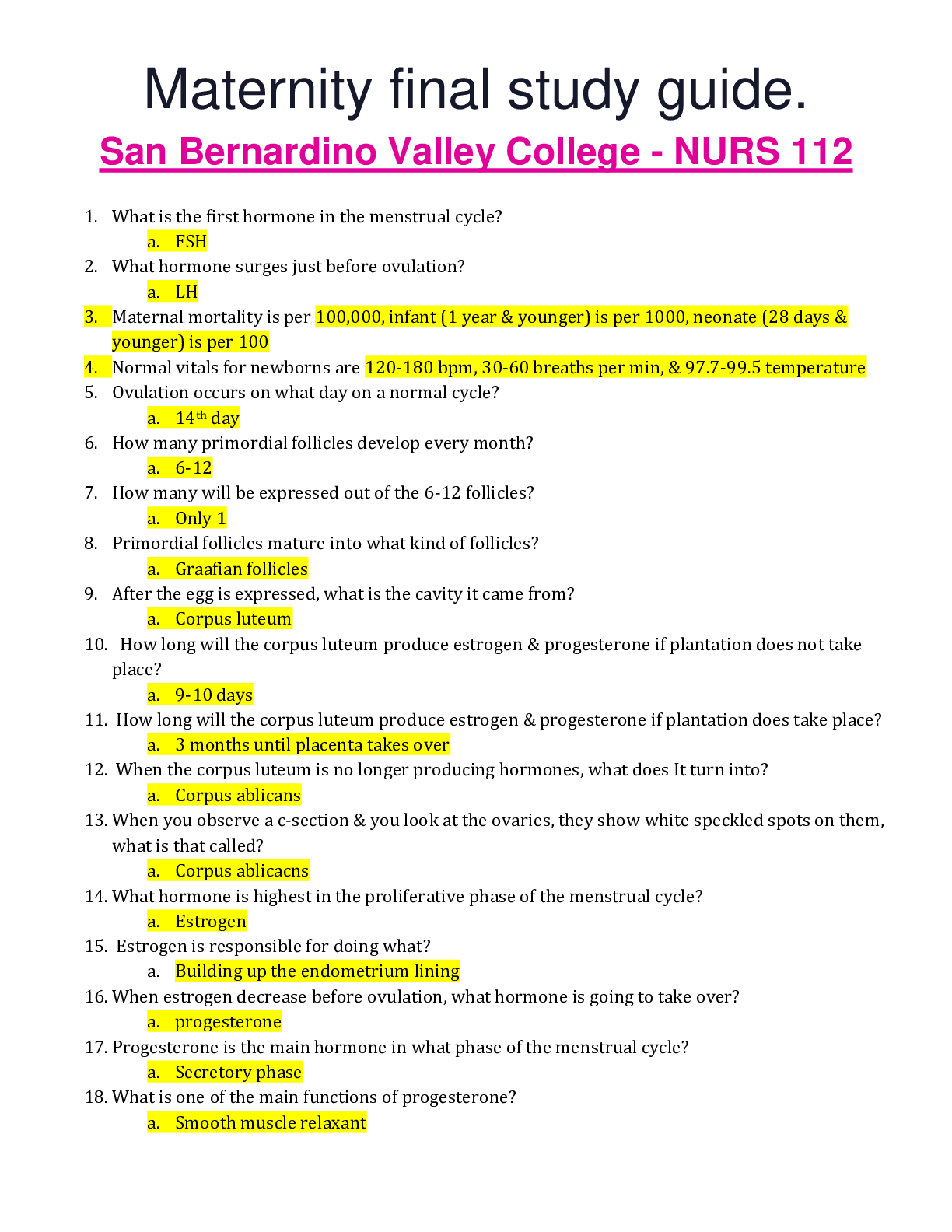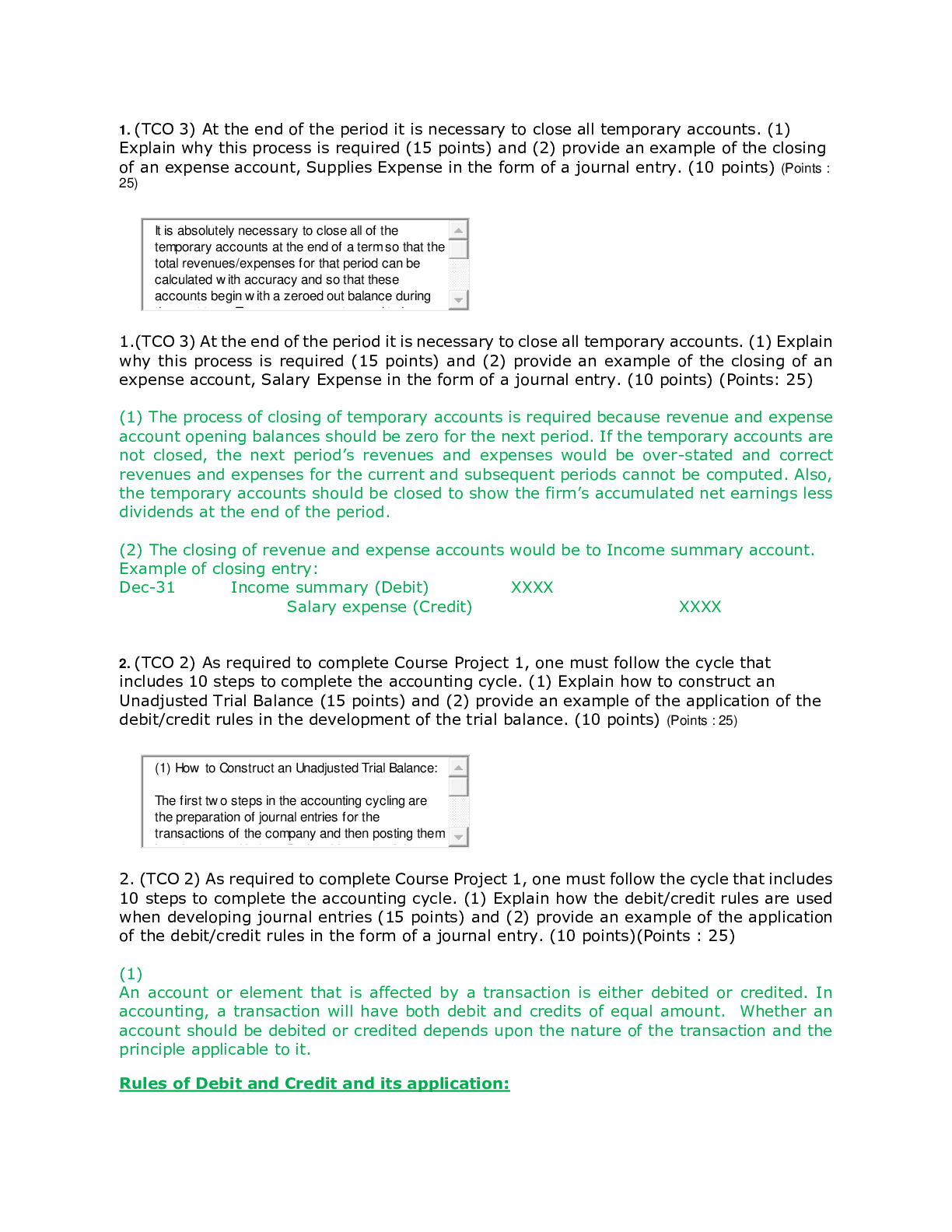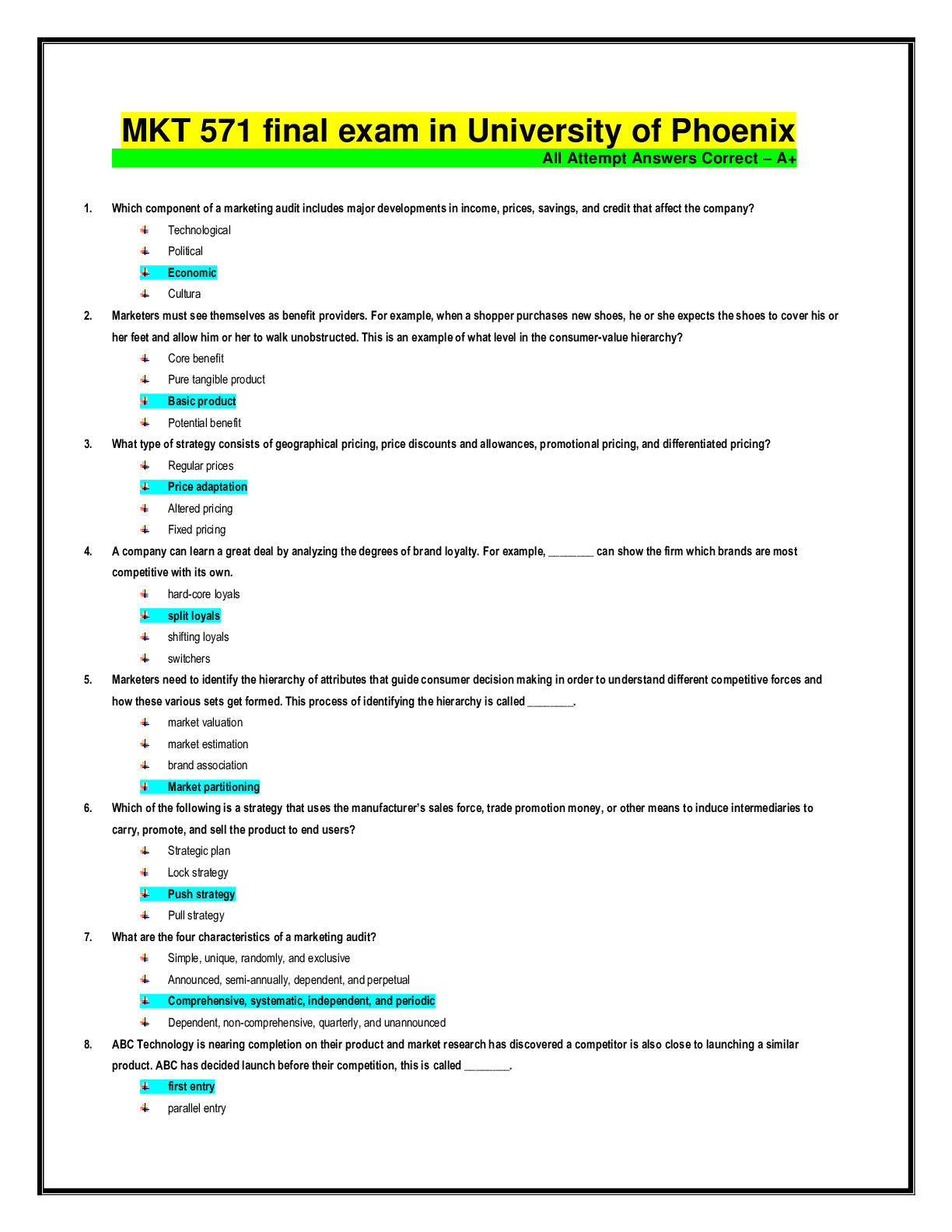Medicine > EXAM > National Physical Therapy (NPTE) Examination Test Bank Practice Questions & Answers Explained with R (All)
National Physical Therapy (NPTE) Examination Test Bank Practice Questions & Answers Explained with Rationales
Document Content and Description Below
National Physical Therapy (NPTE) Examination Test Bank Practice Questions & Answers Explained with Rationales-A patient with a tracheostomy tube has been hospitalized for 2 days. During PT the patient... suddenly exhibits dyspnea, cyanosis of lips and cramping of R calf muscle. What should the therapist suspect based off the sx? a. heart failure b. DVT c. respiratory distress d. pulmonary embolism - C. Respiratory Distress dyspnea, SOB or cramping in calf mms are common signs of respiratory distress. Mucus plugging, tube displacement, disruption or disconnection of O2 can cause respiratory distress A 48 y/o female lawyer presents to an OP clinic with hx of LBP. The PT measures her B arch index at 0.30. Which of the following orthotic interventions is MOST appropriate for this pt? a. heel lift b. post under 5th metatarsal head c. longitudinal arch support d. transverse arch support - c. longitudinal arch support an arch index of > 0.3 indicates low arch or pes planus. longitudinal arch support will be most appropriate and supplemented with foot intrinsic exercises According to the roll and slide mechanism, during right forearm supination at the proximal radioulnar joint, the radial head will: A. Roll and slide posteriorly B. Roll anteriorly and slide posteriorly C. Roll and slide anteriorly D. Roll posteriorly and slide anteriorly - D. Roll posteriorly and slide anteriorly radial head slides opposite the direction of bone motion A 23 y/o healthy male plans to start working out as his NY resolution. The sympathetic nervous system would contribute to which of the following responses to ACUTE exercise? a. increased peristalsis b. increased HR c. increased rate of breathing d. skeletal muscle contraction - c. increased rate of breathing during an exercise, increased RR is due to stimulation of beta 2 receptors- SNS that causes bronchodilation. Initial increase in HR is due to withdrawal of PNS not the stimulation of SNS Which of the following sympathetic CV changes occurs in a pt with long standing Type 1 DM a. HR becomes fixed b. higher resting HR c. lower resting HR d. exercise increases HR - a. HR becomes fixed long term complications - HR is unresponsive to exercise, stress or sleep A PT was observing the gait of a pt with a R transtibial prosthesis The PT suspects that the pt has an excessively firm heel wedge What compensation is the pt MOST likely to exhibit? a. excessive knee flexion in early stance b. premature knee flexion in late stance c. insufficient knee flexion in early stance d. excessive knee flexion in late stance - a. excessive knee flexion in early stance excessive knee flexion in early stance results from firm heel in a transtibial prosthesis. Premature knee flexion late stance occurs if DF stop is too soft. Insufficient knee flexion in early stance is due to soft heel cushion During the initial exam, a PT determines a pt has 3/5 strength in R subscapularis. Which of the following activities would be MOST difficult for the pt to perform? a. performing a push up with B UE b. elevation of R scapula c. extension of GH joint d. flexion of humerus overhead - d. flexion of humerus overhead subscapularis is an important RTC mms, stabilizing the humeral head in the glenoid cavity;thus preventing superior translation of the humerus. It's an important mms in overhead sports. Tear of subscapularis can weaken its hold over long head of biceps causing difficulty in oveerhead activity. A patient came to a clinic with diagnosis of ESRD. The PT is most concerned about prescribing a program for general conditioning. During treatment, the PT notices that the pt is developing skin pallor, fatigue, and dyspnea. The PT monitors their vitals, and will expect which value to be MOST affected based on the pt's diagnosis? a. Increased BP b. Normal BP c. Hyperglycemia d. Hypoglycemia - a. Increased BP In ESRD, the kidney is unable to function and a multitude of complications appear w/ accompanying s&sx. Proteinuria is the hallmark of stage 4; the kidneys are no longer able to excreet toxins, so there is a progressive increase in BUN and creatinine levels. Most people in stage 4 are hypertensive because of an increased production of renin. HTN accelerates the progression to stage 5 (ESRD) when the kidneys have failed to fxn. A 25 y/o pt had a traumatic fall off his bike 1 week ago. Since the injury, the pt has not been able to elevate his scapula. Based on the information given, what is the MOST likely physical therapy diagnosis? a. anterior dislocation of shoulder joint b. posterior dislocation of shoulder joint c. inferior dislocation of SC joint d. Superior dislocation of SC joint - d. Superior dislocation of SC joint At the SC joint promixal articulating surface of the clavicle is convex superiorly/inferiorly and concave anteriorly/posteriorly. During elevation, clavicle slides inferiorly and during depression it slides superiorly. Hence, the superior dislocation of SC joint will cause inability to elevate the scapula A 70 y/o male pt presents to an OP clinic with sensory loss of the R face and arm. This pt is taking medications for HTN, DM type 2, and hydrocortisone for a rash on his leg. The pt initially seems confused but otherwise has intact speech. The therapist would MOST likely suspect a lesion in which vessel? a. L MCA superior division b. L MCA inferior division c. R MCA superior division d. R MCA inferior division - b. L MCA inferior division infarct in MCA inferior division causes contralateral homonymous hemianopsia, fluent aphasia (wernicke's area). Superior division MCA infarct is responsible for Broca's A PT is demonstrating the task of dribbling a basketball to a patient. The PT instructs the pt to dribble the ball in their dominant hand and then encourages them to switch to their L hand. In what phase of motor learning is the pt MOST LIKELY in? a. Cognitive b. Associative c. Autonomous d. Proliferative - a. Cognitive Bilateral transfer is performed in cognitive stage where the pt practices the desired movement pattern using the less affected extremity first and then the affected extremity enhances formation or recall of the necessary motor program, which can then be applied to the opposite, involved extremity A 13 y/o girl has been diagnosed with structural idiopathic scoliosis. The PT notices a L thoracic and R lumbar curvature of her spine. Which postural deviation would be MOST expected in this pt? a. Thoracic vertebral bodies rotated to the R b. Elevated R shoulder c. Spinous processes of thoracic spine rotated to the L d. Posteriorly protruding L scapula - d. Posteriorly protruding L scapula In L thoracic scoliosis, rotation of thoracic vertebra is towards the scoliotic side(left), spinous process deviate towards the concave side(right), right shoulder is low, left shoulder is high and left(scoliotic side) scapula is protruded [Show More]
Last updated: 5 months ago
Preview 5 out of 93 pages

Loading document previews ...
Buy this document to get the full access instantly
Instant Download Access after purchase
Buy NowInstant download
We Accept:

Reviews( 0 )
$14.50
Can't find what you want? Try our AI powered Search
Document information
Connected school, study & course
About the document
Uploaded On
Dec 30, 2024
Number of pages
93
Written in
Additional information
This document has been written for:
Uploaded
Dec 30, 2024
Downloads
0
Views
19
